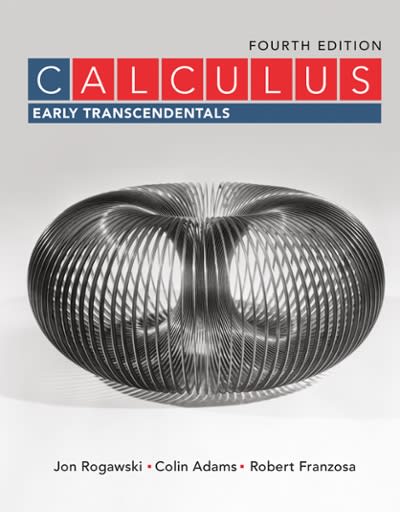Question
1A. In June 2015, a Gallup poll surveyed a random sample of 1,527 adults from California and found that 66% rate the quality of education
1A. In June 2015, a Gallup poll surveyed a random sample of 1,527 adults from California and found that 66% rate the quality of education of Community Colleges as "excellent" or "good". a. Calculate and interpret a 95% confidence interval for the proportion of all California adults who rate the quality of education of California Community College as "excellent" or "good". Show all formulas and work to justify your answers.
Step 1: Check the condition for normality: Step 2 & 3: Find the Critical Value Zc and the Margin of Error E. Critical Value ()= Margin of Error ()= Step 4: Construct the Interval Step 5: Interpretation b. The chancellor wants to construct a confidence interval for the proportion of all United States adults who rate the quality of education of Community College as "excellent" or "good". Should the sample of 1,527 adults from California be used for this purpose? Explain.
1B. We all know that ice cream has lots of calories, but is all chocolate ice cream the same? Does it all have the same number of calories? The students in a statistics class collected a random sample of twenty brands of chocolate ice cream. The numbers of calories, per half-cup serving, are given below and we can assume they are normally distributed. (As a check of your data entry, the mean is 166.) Show all formulas and work to justify your answers. 220 130 130 150 170 140 160 160 240 250 190 190 170 150 110 180 170 90 220 100 a. Construct a 90% confidence interval estimate of the mean number of calories in a half-cup serving of chocolate ice cream. Step 1: Check the condition for normality: Step 2 & 3: Find the Critical Value Tc (use the T-table) and the margin of error E. Critical Value ()= Margin of Error () = Step 4: Construct the Interval Step 5: Interpretation b. Refer to the problem above, if we construct a 99% confidence interval instead, how would that change the confidence interval?
1 C. In the year 2000 about 23.3% of adults said they smoked cigarettes regularly. A researcher wants to determine if the proportion of adults who smoke is now different than 23.3%. A Gallup poll was conducted on July 2018, with a random sample of 1,033 U.S. adults and 21% of them reported regular cigarette use. Conduct a hypothesis test for the researcher's claim using a 5% level of significance. Show all formulas and work to justify your answers. Step 1: Determine the Hypotheses: State the null and alternative hypotheses and define p p in words: H0: Ha: Step 2: Collect the Data Was the sample collected using random sampling methods? Are the conditions for normality met? Step 3: Assess the Evidence Find the test statistic and the p-value, then sketch the sampling distribution with the test statistic (Z-score) labeled in the horizontal axis and shade what the p-value is measuring. Test statistic Z= Picture with shading: P-value: Step 4: State a Conclusion Compare the p-value to the level of significance and draw a conclusion about the null hypothesis and the alternative hypothesis. State your conclusion in the context of the problem. [Bonus] If the conclusion was an error, what type of error would it be? (Type I or Type II) Explain.
1D. A company claims that using its patented meditation technique before taking the SAT will help students complete the test faster. The researcher has previous data from thousands of college students who took the SAT. The time it took these students to complete the test follows a normal distribution with mean =75 minutes. The researcher randomly selects a random sample of 100 student who used the meditation technique and found that the mean amount it took for them to complete the SAT was 71 minutes with a standard deviation of 13 minutes. Using a 1% level of significance, conduct a hypothesis test for the researcher's claim that the patented meditation technique reduces the time it takes to complete the SAT. Show all formulas and work to justify your answers. 1. Step 1: Determine the Hypotheses Describe in words: Ho: Ha: Step 2: Collect the data Was the sample collected using random sampling methods? Are the conditions for normality met? Step 3: Assess the Evidence Find the test statistic and the p-value, then sketch the sampling distribution with the test statistic (T) labeled in the horizontal axis and shade what the p-value is measuring. Test Statistic T= Picture with shading: P-Value = Step 4: State a Conclusion Compare the p-value with level of significance . What decisions should we make about H0 and Ha? Explain what your decision means in the context of this problem.
Step by Step Solution
There are 3 Steps involved in it
Step: 1

Get Instant Access to Expert-Tailored Solutions
See step-by-step solutions with expert insights and AI powered tools for academic success
Step: 2

Step: 3

Ace Your Homework with AI
Get the answers you need in no time with our AI-driven, step-by-step assistance
Get Started


